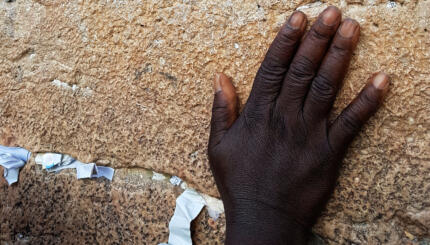The following article focuses on some writers and works characteristic of early Israeli literature. One writer who is mentioned in passing and deserves a special note is Yoseph Hayyim Brenner, who left Russia and his Orthodox upbringing and settled in Palestine in 1909. His writing was critical of traditional Judaism and Diaspora life, and he was the first great prose writer in modern Israel. Other important writers who could have been discussed include Nathan Alterman and Yocheved Bat Miriam. The following is reprinted with permission from Modern Hebrew Literature in English Translation, edited by Leon Yudkin.
In the course of the 1920s, Palestine was confirmed as the center and focus of Hebrew literature. During that decade, H.N. Bialik (1873-1934), U.Z. Greenberg (1896‑1981), and S.Y. Agnon (1888‑1971) (for a second time) joined the yishuv [the pre-1948 Jewish community of Palestine]. Several major writers came later in the thirties.

No centers of Hebrew literature remained outside of Palestine. There were various reasons for this. The Russian revolution and especially Stalin’s accession to power virtually put an end to the Hebrew movement in the Soviet Union. Poland was becoming a dangerous place for the Jews in the wake of its independence. World War I and the civil unrest in Germany and Russia had undermined life, and the Pale of Settlement [a territory for Russian Jews established in 1791] was at an end.

Help us keep Jewish knowledge accessible to millions of people around the world.
Your donation to My Jewish Learning fuels endless journeys of Jewish discovery. With your help, My Jewish Learning can continue to provide nonstop opportunities for learning, connection and growth.
On the positive side, the Balfour Declaration issued by the British Government during the war, and confirmed in the post‑war period, strengthened the claims of the yishuv and the demand of Jewish immigration to Palestine. The yishuv indeed began to look like a state‑in‑the‑making, and considerable resources were now directed towards the fulfillment of this projection, which was now perceived as urgent.
The Writers of the Second Alyah
The writers of the Second Aliyah (the second major wave of immigration to Palestine, 1904-1914) seemed to have been influenced by Y.H. Brenner and turned away from Palestine as a serious subject for fiction. But, as though in response to this, the poets of the Third Aliyah (1919‑1923) characteristically adopted the new land as their major subject matter, and even tried to change their personalities to fit the new role of local poets serving a community of Hebrew pioneers. A self‑conscious effort was made by the new Hebrew poet to break away from the Diaspora tradition and to become an authentic native in local garb.
A. Shlonsky (1900‑1973), in an early series of poems, “Gilboa,” writes: “Clothe me, holy mother, in a coat of many colors gloriously / And at dawn take me to labor.” The poet’s explicit self‑identification with the sense of biblical election is made earlier in the same poem: “Thus the lovely city prays to its creator / And amongst the creators/ Is your son Abraham / Poet, roadbuilder in Israel.”
The highly charged emotionalism of the declaration is partly created and reinforced by the ritualistic and traditional associations of Shlonsky’s language. The word used for poet is paytan, i.e., the liturgical poet. Calling himself “your son Abraham” (the poet’s name) recalls the biblical patriarch chosen by God. Donning the coat of many colors is, of course, a reference to the favoring of Joseph by his father. And the city as a whole is praying the morning prayer. Pioneering labor is now a religious exercise, a recreation in another form of an ancient ritual.
Religious and Secular Styles
Greenberg makes a similar declaration in his first Palestinian Hebrew poems where, in ringing tones, he recalls glory and disaster to his pioneer readers: “You ask the way to a time two thousand years ago, to see the infancy of a people, its cradle, before its sanctuary was consumed / I know your yearnings…So I want to be your wandering poet (paytan) forever, from Ashdod to Metullah beneath cactus and shady palm.” At this stage of his writing career, Greenberg was quite close in spirit to Shlonsky, identifying with the Hebrew laborer and the collective effort. But his liturgical vocabulary was taken more literally, and the sorrow over the destroyed Temple became an integral part of nationalist political vocabulary.
This sort of religious association is also invoked by Y. Lamdan (1899‑1954) in his expressionist effort, Masada (1927). The sacral allusions add immediacy and power to the secular context, which then acquires a religious power in its demanding impositions. This “secular context” is the resettlement of the Jews in Palestine, their return to the Land. It may be that the distinction between religious and secular is artificial. Certainly, the secular can acquire religious overtones, as does the Russian revolution in A. Blok’s famous poem “The Twelve.” Poetry, hortatory or expressionist, was the characteristic mode of the Third Aliyah, which used literature to stake an affiliation to the Land, a bond earlier questioned by Brenner.


